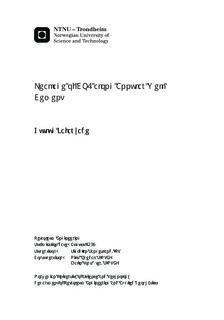Leakage of CO2 along Annular Well Cement
Abstract
Carbon Capture and Storage (CCS) projects are aimed to store CO2 underground and to prohibit/restrict any leakage to the well, formation and to the surface. Standards applied to control a well and to keep its integrity are aimed to stop this fluid entrance. Nevertheless, leakage can occur from the debonded formation cement interfaces. The main goal in this experimental work was to study leakage of CO2 along cement formation interface. In order to investigate debonding degree, samples were prepared as a small well model with a cement/formation interface. During sample preparations 4 rock, 2 cement and 3 fluid types were used to see appearance of weak bonds. 24 different samples were scanned with µ-CT and modeled with Avizo to see interface porosity and morphology. Scanned samples had been tested in CO2 batch exposure to visualize chemical alterations on the samples. Setup had been made for CO2 core flooding to measure the amount of fluid leaked through the cement-formation interface. Result before experiments showed that porous and permeable rocks with good mud/cake fluid coverage give lower bonding degree while pristine samples (model of ideally cleaned well) give 100% bonding percentage. In addition from the µ-CT results it was found that the samples treated with filter cake had higher bonding degree than the samples treated with mud. After the flooding/batch exposure experiments degradation has been observed on the cement and rock surfaces. Meanwhile CO2 and brine cleaned cement-rock interface from mud/cake on core flooding experiments. Moreover, the amount of fluid leaked through the debonding was measured and compared for three rock samples.
